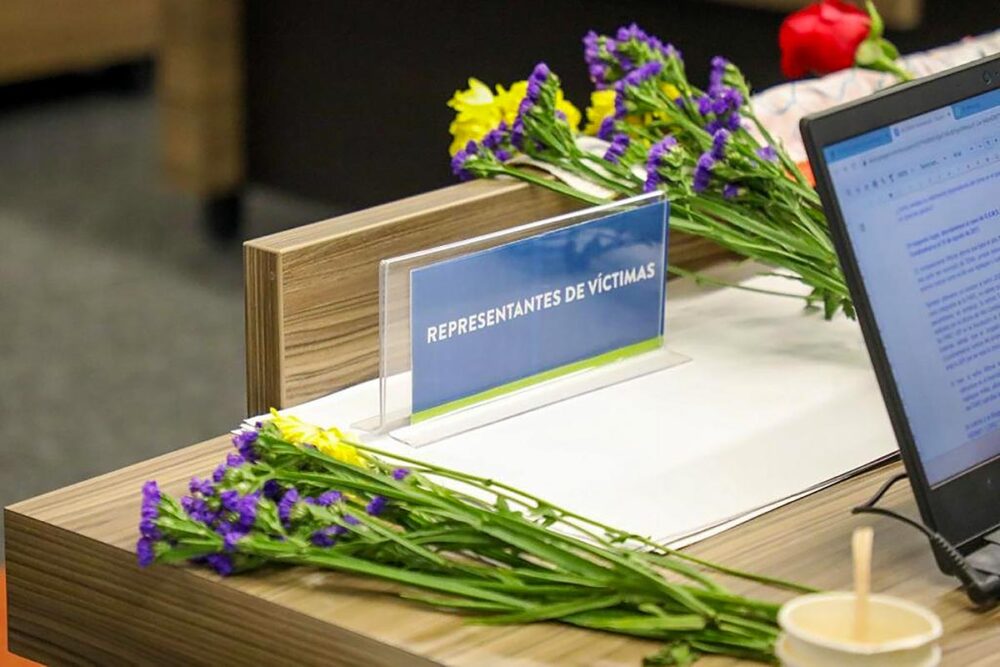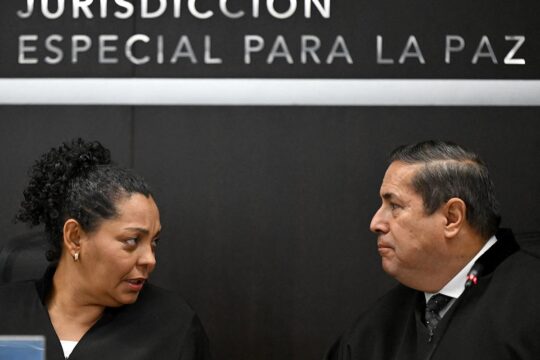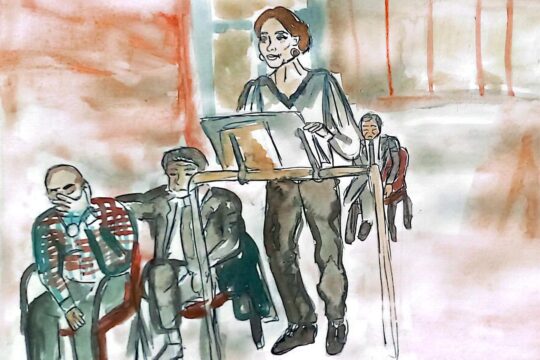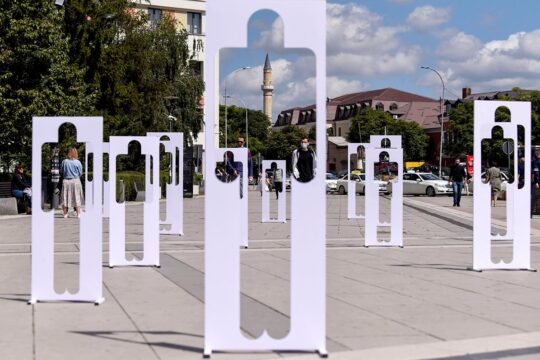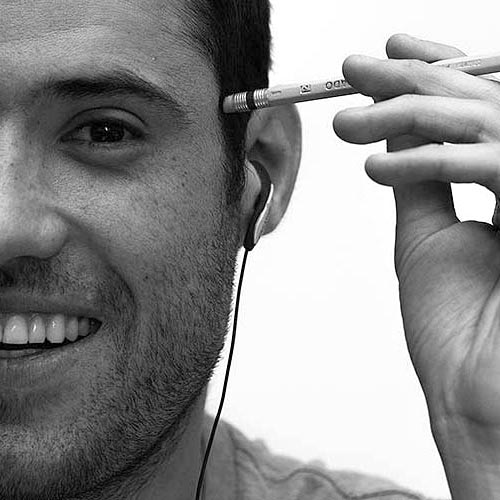On 27 February 2019, Abby Reyes received an email telling her that the newly born Special Jurisdiction for Peace (JEP) had launched an investigation into kidnappings committed by the former Revolutionary Armed Forces of Colombia (FARC) and explaining how the innovative transitional justice model created by Colombia in the 2016 peace agreement works. In the message, senior law clerk Ana María Mondragón invited her to take part in the case.
Twenty years earlier, almost to the day, her partner Terence Freitas was kidnapped on a rural road in Cubará, an isolated village in Colombia’s north-east near Venezuela. A 24-year-old biologist and environmental specialist, he’d been accompanying the U’wa indigenous people’s struggle against plans by US oil giant Oxy to drill in their ancestral territory for two years. FARC rebels stopped the truck driving him and two colleagues, Ingrid Washinawatok El-Issa, a leader of the Menominee people of Wisconsin and the indigenous rights Four Directions Fund, and Lahe’ena’e Gay, a Native Hawaiian and founder of the NGO Pacific Cultural Conservancy International, to the airport in Saravena where they would begin their return journey to the United States. A week later, the bodies of the three were found on the other side of the Venezuelan border. The case, known as ‘the case of the American indigenistas’, caused a national commotion.
“The email sat unread in my inbox. It was from Colombia. I knew what it said, but also knew that I couldn’t open it without more support.” These are the opening words of Truth Demands, the poignant new book in which Abby – an environmental lawyer of Filipino origin and an expert in community resilience projects at the University of California, Irvine – that tells the story of Terry, the idealistic young man she’d dated for months and with whom she had just moved into a shared flat in New York that he never got to. She also recounts her 25-year-long quest for the truth, which led her and Julie Freitas, Terry’s mother, to become the only foreigners and non-residents of Colombia to be accredited as victims before the JEP.
Her story shows how the participation of victims in Colombia’s transitional justice, even in cases where the truth that emerges in the investigations is partial and within a system whose logic is to uncover patterns of macro-criminality rather than to address case by case, has had intangible effects such as helping them continue processing their losses and intimate pains.
Uncomfortable timing
At first, Abby felt confronted by the invitation. “The timing was uncomfortable”, she wrote. “I sat on the couch in the tiny rental [in Oakland, where she’d arrived to commemorate the 20th anniversary of Terry’s death] thinking, who are they kidding? The FARC murdered our friends and destroyed our families. The Colombian government waited twenty years, and now they’re asking for our questions?”
After a while she read the letter again. One paragraph particularly caught her attention. “You can send us the questions you have about your case – truth demands – so we can ask the ex-combatants about this in the context of the voluntary versions”, Ana María Mondragón had written to her. Perhaps it also helped that Abby sought advice from Astrid Puentes, now UN special rapporteur for the environment, who coincidentally had been Mondragón’s boss at the environmental law NGO AIDA, where both had worked on the U’wa case before the Inter-American human rights system.
In the letter, Mondragón explained that there were two ways in which Abby could participate: she could send a report recounting her experience “in her own words”, as well as any material that could be useful to them in the investigation; and she could ask to be recognised as a victim of the FARC in the so-called ‘case 01’. She also explained the peculiarities of the Colombian model: if those considered most responsible for the criminal policy of kidnapping acknowledged their responsibility and provide the truth, they would receive a more lenient 5-to-8-year sentence in a non-prison setting. If they failed to do so, their case would move to an adversarial track in which, if found guilty, they’d go to prison for up to 20 years.
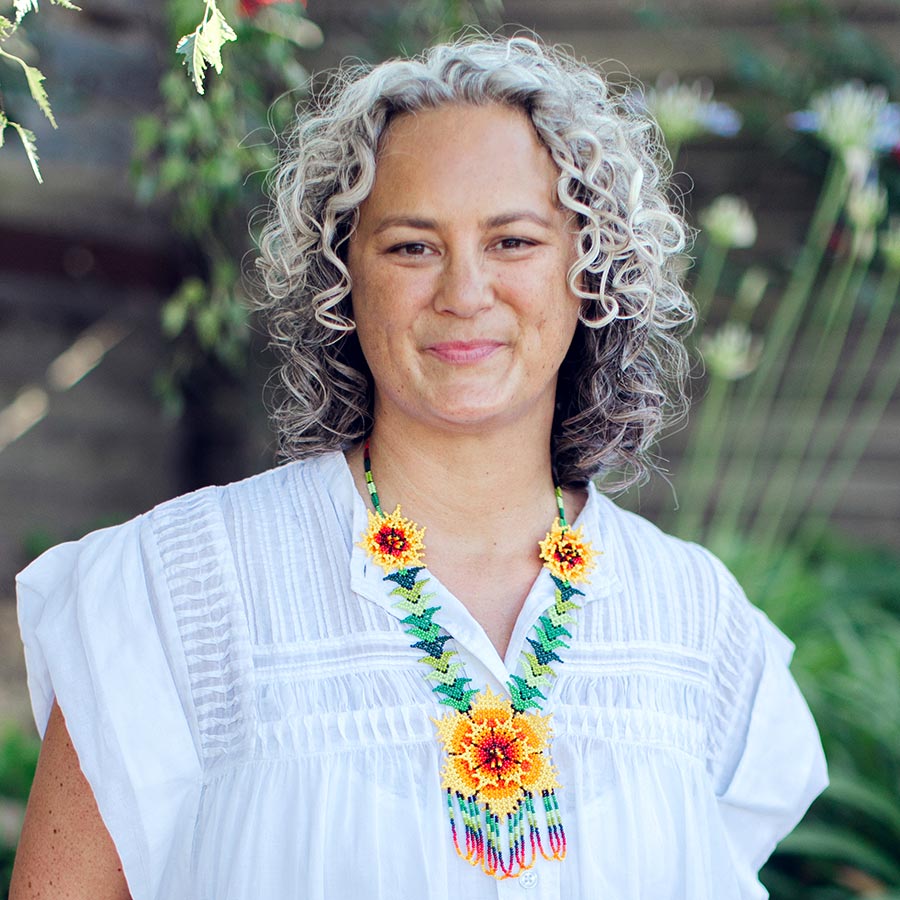
“We just have love letters”
A week later Abby wrote back. “I want to participate in both ways you describe”, she wrote, adding that Terry’s mother also agreed and asked to be represented by her before the JEP.
There were practicalities that soon became a challenge. To be credited as a victim, proof of a family relationship was required. Julie could provide her son’s birth certificate but in her case, Abby explained to the assistant magistrate, “we were 24 years old and were not married, what proof may I offer?" she asked. “We just have love letters.” Mondragón reassured her: the letters would suffice. They would prove what Colombian law calls "a direct and legitimate interest to be recognised as a victim". On Julie’s side, she’d have to open the boxes of Terry’s memories she kept untouched. On her side, she’d have to revisit a little wool bag in which she had deposited the love letters she hadn’t touched in two decades.
The JEP officials may not have realised what they were already stirring in Abby. Or perhaps they did, but they attributed it to the flood of mixed emotions of many victims after being sought by the nascent transitional justice system. Mondragón herself, in charge of designing the participation method for kidnapping victims and of searching for dozens of them who left for Costa Rica or Florida, was not aware of the date she chose to write to her. Asked six years later, she remains silent for almost a minute, visibly shocked. “I had no idea. What a beautiful coincidence, what synchrony.”
The face of justice
A few months later, Julieta Lemaitre, the justice presiding the case, told Abby that two former guerrillas who participated in the events had been identified. She asked her what she wanted them to answer, but also “what would justice mean for you in this case”.
It wasn’t a simple question. Julie replied that nothing could bring them back, so for her justice would be “the U’wa getting to live in peace, without interference from oil companies, men with guns and the state, [and] being able to recover their lands and waters, and assert their traditional ways of life throughout their territory”. Abby agreed with that vision. In her words, “justice for us has never been about the petty agents of the extractive economy”, but about “making visible the lines between harm on the ground and the command centres, statehouses and boardrooms that issue the often tacit orders to act”.
At the JEP’s request, they also relayed ideas for possible sanctions, including former rebels being assigned to mothers who were deprived by the FARC of their children, to be useful to them in their old age. It was a satisfying exchange for Abby, after years without seeing progress in the ordinary criminal justice, albeit one she describes as “moving through molasses” and in which each message plunged her into “a fresh wave of sobbing, stomach and lower back clenched”.
36 truth demands
In April 2019, Abby and Julie – now accredited as ‘special interveners’ – sent their ‘truth demands’ to the JEP. This was the concept that psychologist Lina Rondón coined to identify kidnapping victims’ specific needs to know and the anguish that the crime left them with, as distinct from their demands for acknowledgment from FARC.
Terry’s mother and partner sent a list of 36 questions that Abby describes in her book as “one part corporeal, three parts political”. Many of them inquired about the conditions of their captivity and their last moments – common questions among kidnapping victims which the six indictments issued by Lemaitre’s team since early 2021 extensively document. Did they sleep and were they fed, did they wear shoes on the walks forced upon them, were they always tied up, were they physically harmed before they were killed?
They also wanted to understand the motivations behind the abductions, including how they learned of the presence of the three US citizens in the area, whether anyone pointed them out to them, and whether they considered demanding a ransom in exchange for their release. More than half of their questions sought to understand if the triple kidnapping and murder was related to the work they were doing with the U’wa and whether any companies were involved. Who decided to kill them? Did they receive any payment for these crimes? Did they talk to any US company or citizen about them? Did rebels ever provide protection services for Oxy’s machinery? Why did FARC continue to persecute U’wa leader Berito Cobaría, winner of the Goldman Prize or ‘environmental Nobel’?
They closed with the most personal questions, perhaps the toughest ones. Julie wanted them to explain why he was shot 10 times. Why 10 bullets? Abby had two concerns: did Terry pronounce her name? Did they, the FARC, know her name?
A former rebel leader’s tale
In mid-2021, Abby sat at her computer in a cabin she’d rented for the summer in Vermont. Accompanied online by several JEP officials and her lawyers, she watched the video testimony of one of the few FARC survivors who participated in Terry’s kidnapping and murder. His name was Reinel Guzmán, his nom-de-guerre ‘Rafael Gutiérrez’ and his role, local commander of a unit in the guerrilla’s Eastern Bloc. He was the one who’d issued the fateful order. “Kill them”, he’d instructed.
In this ‘transfer’, as the JEP calls providing victims with access to the extended accounts of perpetrators and the only one done so far in a language other than Spanish, fragments of the truth that Abby longed for emerged. Not regarding why it had happened, her primary interest, but about how. It was, in her words, “a timeline of events between the kidnappings and the executions that I had never heard before”.
According to Guzmán’s account, his men kidnapped the three US citizens and took them to Venezuela on the orders of Germán Briceño Suárez, aka ‘Grannobles’. It was an atypical situation because he was not that unit’s commander, but he was brother to the feared ‘Mono Jojoy’, top commander of the Eastern Bloc and a historic member of the FARC Secretariat until his death in 2010. Guzmán said that on 28 February 1999 he asked ‘Mono Jojoy’ for instructions by radio, but that it was his brother ‘Grannobles’ who replied in the afternoon with the order to kill. Despite his boss’s silence, Guzmán said that he relayed the order to his men. The next morning, two hours after they reported having carried it out, ‘Jojoy’ finally appeared. He asked them to wait and mentioned a “diplomatic situation”. “Take care of them”, was his evidently belated instruction.
The revelation came as a shock to Abby. “If this one man could have slept on it, could have exercised forbearance over one night, our lives could have been so different”, she wrote in her book.
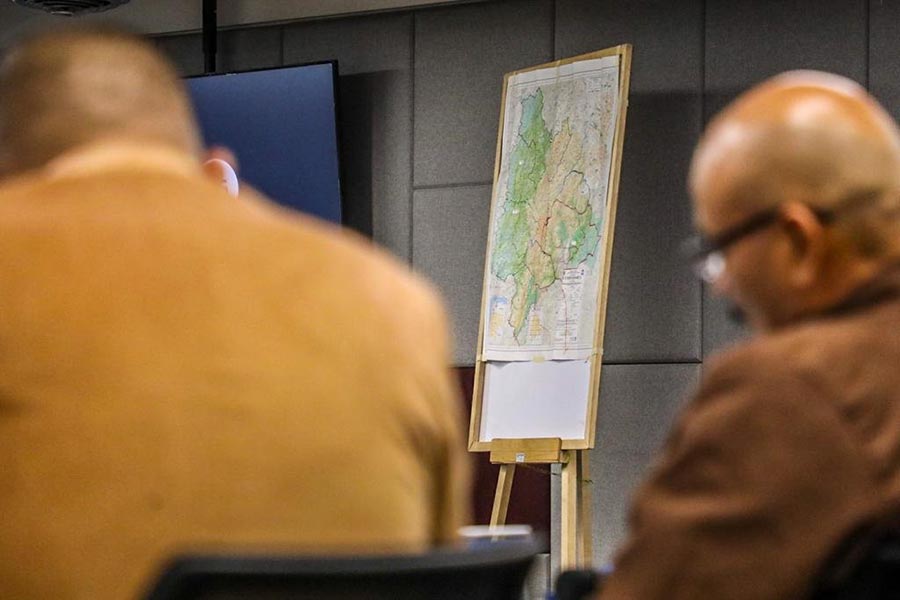
No accountability for companies
Abby spotted, however, contradictions in Guzmán’s account. The former FARC leadership has maintained before the JEP that ‘Grannobles’ acted alone and without authorisation from his superiors, including someone as important in the organisation as his brother, because of suspicions that they were CIA agents. At the same time, Guzmán pointed out that ‘Grannobles’ referred to them as "indigenistas" from the first day of the kidnapping, which for Abby undermines the theory that they were intelligence agents. Who benefits from these inconsistencies, asks Abby in her book. Possibly Oxy, she wrote.
Could the JEP clarify whether the oil company had any connection to the crimes that took place 25 years ago? There was a problem: the 2016 peace deal with the FARC provides for the special tribunal to investigate, judge and sanction people who had “active and determining participation” in collaborating with or financing those who committed atrocities. However, Colombia’s Constitutional Court limited the JEP’s mandate on ‘civilian third parties’ and determined that it cannot summon them, but that they could come voluntarily, under the same conditions and incentives as other actors. That decision limited the Colombian transitional justice system’s scope of action over civilians, giving rise to what legal NGO Dejusticia and academic Sabine Michalowski called its “restricted competence”. This is why only a handful of civilians have reached the JEP, most of them already convicted in the ordinary justice system. The court has no jurisdiction over companies, something that for Abby means “a gaping hole in the possibility of truth”.
How they won
In the end, Abby feels that “the JEP process surfaced minor clarifications at best about the material circumstances of the kidnappings”, but that most of her questions remain unanswered. “My access to truth about what happened remains fractured. I still hold only fragments”, she says. Still, she values the “attentive anticipation” of the “impactful human rights lawyers” at the tribunal and felt it was worth participating in the transitional process. “For the first time, I felt like I was in charge of the terms of engagement”, she reflects.
That perception may still change. The JEP included the kidnapping and murder of the three US indigenous rights activists as a serious and representative case in its indictment for war crimes and crimes against humanity against the former FARC leadership over their kidnapping policy, which is still pending sentencing. According to the special tribunal, it illustrates “the particular vulnerability of foreign nationals who were considered suspect by the organisation”. It’s likely to appear in greater detail in the accusation against former Eastern Bloc members deemed as being most responsible of such crimes, one of the two remaining indictments in this macro-case (although ‘Grannobles’, now believed to be in a dissident group that broke away from the peace agreement, cannot be charged).
Abby’s journey in search of truth and justice, stalled for years, accelerated on another front. On 20 December 2024, the Inter-American Court of Human Rights condemned the Colombian state for violating the rights of the U’wa indigenous people by allowing oil exploration in their territory without their consent. With that milestone, after another three-decade legal struggle, Abby’s book ends. “We won”, she wrote.


